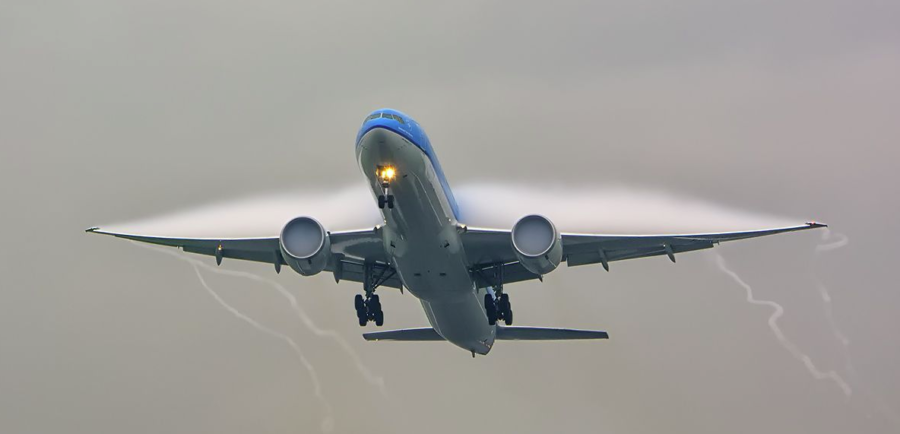FAA Expands Lightning Protection Checks on Boeing 777 Fleet

The Federal Aviation Administration (FAA) plans to broaden its inspections of Boeing 777 fuel feed tubes for latent lightning protection failures, concluding that an existing mandate does not cover all aircraft that could be at risk.
A Sept. 15 notice of proposed rulemaking outlines repetitive inspections of fuel feed tube bonding jumpers on most 777-200, 777-200LR, 777-300, 777-300ER and 777F aircraft. This new proposal would replace an October 2024 airworthiness directive that specifically targeted GE Aerospace-powered 777s.
Bonding jumpers form part of a system designed to prevent ignition sources from developing within fuel tanks when lightning strikes nacelles. Boeing has discovered “poor electrical bonding of the spar bulkhead fitting and bonding jumpers” on some 747s and 777s. The 747 issue was addressed in a November 2023 directive, while the October 2024 mandate focused on the 777s Boeing initially identified as most at risk—GE-powered aircraft with a single bonding jumper per engine.
However, while Pratt & Whitney and Rolls-Royce-powered variants have a second bonding jumper that provides additional protection, their designs are otherwise the same, meaning all variants share the unsafe condition, the FAA said. Boeing issued a new requirements bulletin in mid-August recommending the expanded inspection regimen.
Under Boeing’s guidelines, initial inspections should occur within 90 days. Depending on the variant and findings, repetitive checks are recommended every year or, in some cases, every 39 months. The FAA proposal would adopt Boeing’s recommended intervals.
The expanded inspections cover both the tube and the “encapsulation seal” on the tube’s bulkhead fitting. Boeing has received reports of encapsulation failures on 747s and told the FAA, “Analysis has shown that at least a subset of the encapsulation failures seen on Model 747 airplanes is expected on Model 777 airplanes.”
In reviewing the issue, Boeing discovered that 777 fuel system maintenance instructions do not adequately describe reapplication of encapsulation sealant after fittings are removed and replaced. The FAA explained that the observed encapsulation failures are frequently associated with inadequate application of sealant. “While failures are partly attributable to the design of the fitting and its associated coupler, sealant is frequently applied too thinly, does not cover the entire fitting and coupler, does not extend sufficiently onto the fuel feed tube, or the relevant surfaces are inadequately cleaned prior to application, preventing proper sealant adhesion,” the agency said. Improper sealant can create the same unsafe condition the inspections are meant to prevent.
The proposed directive also calls for updating the affected maintenance instructions, or Critical Design Configuration Control Limitations (CDCCL), within 60 days to ensure proper sealing practices. The FAA’s expanded checks aim to address potential lightning protection failures across the broader 777 fleet before they pose a safety risk.
Related News: https://airguide.info/?s=boeing+777, https://airguide.info/category/air-travel-business/travel-health-security/
Sources: AirGuide Business airguide.info, bing.com, aviationweek.com
